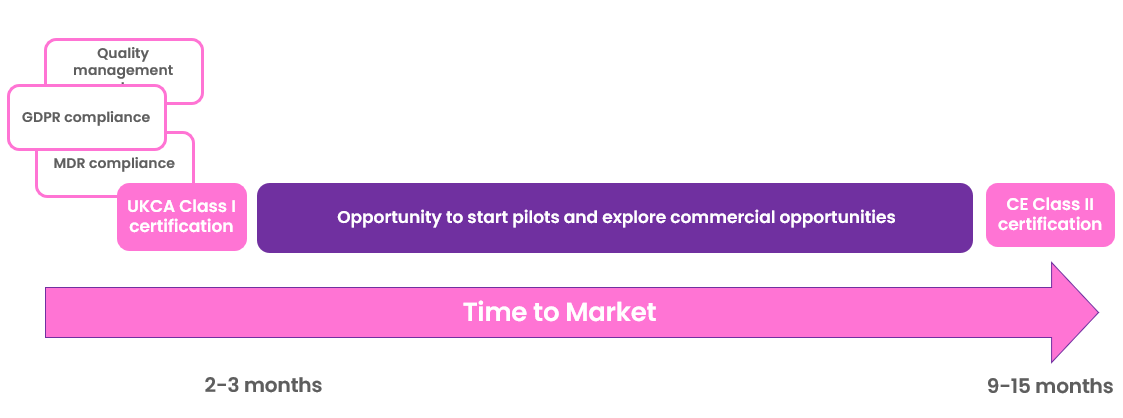UK Regulatory and compliance requirements
To access the UK market, regulatory and compliance activity required is two-fold:
- Work required to obtain regulatory clearance to place the device on the market and obtain either a UK or CE mark (if applicable).
- Work required to build trust by meeting customer expectations and complying with other legal requirements to gain market access.
Key requirements for all parts of the UK market are:
1.The General Data Protection Requirements
2.General Product and Safety Requirements
Key requirements for doing business with UK government (public) entities including NHS organisations are:
3.Certification against the CyberEssentials scheme
4.Public Sector Bodies (Websites and Mobile Applications) Accessibility Regulations) 2018
5.Compliance with the Government Digital Standards (this is not mandated but highly encouraged to promote a consistent and accessible user interface).
Other key requirements for selling into the NHS are:
6.Compliance with the Digital Technology Assessment Criteria (DTAC)
7.Compliance with the NHS Data Security Protection Toolkit (DCB129)
8.Compliance with the NHS Information Standard for clinical safety for health IT manufacturers (DCB0129)
9.Compliance with NICE Evidence Framework
10.ISO27001 (this is not mandated but is referenced in government procurement frameworks)
Care Quality Commission registration may also be required if you plan on providing a regulated activity including treatment of disease, disorder or injury or independent diagnostic and screening procedures (https://www.cqc.org.uk/guidance-regulation/providers/registration/scope-registration/regulated-activities)
For any software as a medical device manufacturer seeking to enter the UK market (either UK or EU based), we think the goal should be to obtain a CE marking and use this to place the device on the UK market. Pursuing this route, however, will likely take between 12 and 15 months as most SaMD is likely to be classified as class 2 or above and will require an external notified body conformity assessment.
A UKCA mark can be obtained in a short time (1-6 months) and you can start pilots and explore commercial opportunities sooner with a registered medical device. You have the option to register for a clinical investigation of unregistered medical devices in the UK prior to CE approval, but this introduces a level of complexity and reduces the speed at which you can execute on pilot opportunities.
If your software has a class1 risk profile under the UK MDR*, Deviceology’s suggested approach for faster access is to obtain a class I UKCA mark as an expediency to support activity in the UK, and at the same time plan to register as a CE class II medical device in Europe.
Once a CE marking for your device has been obtained, there will be no need to maintain the UKCA class I medical device mark, as the CE marking can be used for regulatory clearance to place and sell a medical device on the UK market,








